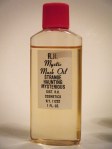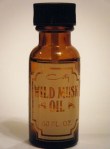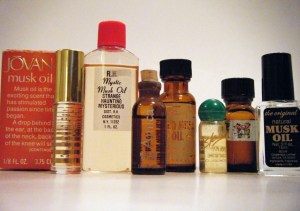The subject of this article is not the original Climat parfum from 1967. Nor is it the much later La Collection reissue from 2005. This article is written specifically about the Climat parfum of the 1980s and 1990s in the bright blue marble-ized box, with the deep, olive-green juice. This Climat is a source of longing for thousands of women (many of them from the former Soviet Union), and it is proving increasingly elusive to procure.
At this time, many vintage Climat lovers , like me, are in a fragrance crisis. We have smelled the nectar of the gods and surrendered to it. It is a scent that wraps us around its elegantly tapered finger, and we do not resist. Indeed, we rush forward, committing to it. Its beauty shocks us with its tart citrus and peach notes splashed by subtle aldehydes and laid transparently over a floral heart of rose, lily, jasmine, and narcissus…and the light sweetness of an unusual amber , giving the whole thing a fresh, powdery innocence and heralding the warm, high-quality sandalwood/vetiver drydown. I’m enslaved. So I seek it out. I shell out hundreds of dollars for half an ounce of ambrosial dew. And then, like Icarus who got too close to the sun, I am burned. And devastated. Over and over again, my efforts thwarted. I huddle in a corner, whimpering, scratching the paint off the wall with my fingernails. A woman on the edge, like Farrah Fawcet in ‘The Burning Bed.’ Okay fine, so maybe it’s not that bad. But still, it’s pretty annoying! The tide of fake vintage Climat on the market is overwhelming. So what the heck is a Climat lover to do?
In the following FAQ I will try to shed some light. All of the pictures in this blog post are of REAL vintage Climat.
 I just bought a 14 ml bottle of vintage Climat parfum. Why doesn’t it smell right?
I just bought a 14 ml bottle of vintage Climat parfum. Why doesn’t it smell right?
The 14 ml vintage parfum is the most faked version of Climat. The reason for this is simple: supply and demand. There is a strong demand for this version because in the 1980s many women in the former Soviet Union and other locales had access to this scent, and wore it. They loved the fragrance and now have fond memories of it. But it has been discontinued for a long time. So? The perfume fakers create fake copies of the parfum and pass them off as real in order to meet the demand. Some of the fake parfums smell similar to vintage Climat, some of them do not. Some of them have a strong scent, some of them smell very weak. Still, they are all fake, and some buyers do not even realize that they have received a fake. Real vintage Climat parfum from the 1980s is very rare.
Where do these Climat fakes come from?
Many of the fake bottles of Climat come from Eastern Europe/Ukraine/Russia. I have read that some of them are manufactured under license in Netherlands or in the Middle East, but in my experience a lot of fake Climat seems to have strong connections with Ukraine/Russia, which is where the demand is strongest (as well as among expatriates). Perhaps the fakes are merely distributed to Eastern Europe but do not originate there?
How are the fake bottles manufactured?
The fake Climat parfums fall into two categories: 1) fake packaging + fake juice, and 2) recycled authentic packaging + fake juice. Let’s examine both categories
1) The first category includes boxes that are fake, bottles that are fake, braided ribbons that are fake, and they’re filled with perfume that is fake. The packaging and perfume are all imposters, manufactured cheaply and although they resemble real vintage Climat at first glance, they show inconsistencies in the packaging that demonstrate that they are not authentic.
2) The second category is comprised of authentic vintage Climat boxes, authentic vintage braided ribbons, and authentic vintage bottles which have been re-filled with fake perfume. In Europe, there is apparently an active industry which recycles real, used Climat boxes and bottles, and fills them with fake juice. They appear to be completely legitimate when you look at the packaging , but when you smell the actual perfume and inspect the color visually, it is clear that it is not true Climat: the authentic empty bottle has been refilled with fake perfume.
Where can I buy real vintage Climat parfum?
Several times a year, there are bottles of real, vintage Climat parfum that appear on Ebay, both U.S. Ebay and Ebay in other countries – and also regional marketplaces like Meshok.net will have real bottles of Climat.
 When did Lancome stop making Climat parfum?
When did Lancome stop making Climat parfum?
This is a difficult question. I have read from some Russian & Ukrainian women online that in the early 1990s, Climat parfum became difficult to find in those areas. I have also read a post on a Russian message board stating that Climat was, around this time period, being manufactured in the Middle East (or India?), and that there was a fire which destroyed many of the raw materials for a planned batch of Climat, but I cannot verify this. I believe that vintage Climat parfum was repackaged in the 1990s and its distribution became limited in certain areas/marketplaces. The parfum’s production had been discontinued by 2001.
What percentage of vintage Climat parfum on the market is fake?
A huge majority of the vintage 14 ml Climat parfums for sale online are fake. Literally, about 95% of the bottles that you find on Ebay and online etailers are fake bottles.
If a bottle sells for hundreds of dollars, does that mean that it is real?
No. Many of the fake bottles being sold online have prices set at $40.…$100.…$200.…$300…Generally speaking, nearly all of these are fake Climat. Once in a while, a real, authentic bottle of Climat will come on the market and when it does it usually sells for hundreds of dollars. This is the reason that sellers of fake Climat set the price so high: because it makes their product appear to be authentic and rare.
Why do buyers of vintage Climat parfum on Ebay often leave positive feedback?
Out of curiosity, I have contacted some buyers who left positive feedback for the seller of a typically faked Climat (update: Ebay members can no longer see the usernames of other Ebay members who leave feedback). I asked them if they were happy with the Climat parfum that they received. They wrote back to me with a variety of responses, stating that 1) they bought the perfume to give as a gift, 2) they had actually not opened it and tried it yet, 3) it did not smell like Climat should smell, but it still had a lovely smell, 4) they knew it smelled different but they thought it was due to age, 5) they knew it was fake but it resembled the original quite a bit so they were happy.
Does the 2005 La Collection re-release of Climat in Eau de Parfum smell like vintage Climat?
Although it bears a resemblance to vintage Climat , the 2005 release does not smell identical to it. They reformulated it, and the high-quality natural ingredients which made vintage Climat parfum so lovely were left out of the La Collection release, and it shows. While the 2005 version is a pretty fragrance on its own, most vintage Climat lovers agree that it does not smell just like the version from the 80s & 90s.
 How can I tell real vintage 80s/90s Climat parfum from fake?
How can I tell real vintage 80s/90s Climat parfum from fake?
-The lettering on real, authentic bottles of vintage Climat parfum is always the same: the same lettering, the same word order, the same text, the same spacing and measurement between the letters. The letters should be clean and clearly articulated without smudges in the ink. Fake Climat lettering sometimes looks sloppy in comparison to the real thing. The picture to the right is a close-up picture of how the lettering should always look on authentic vintage Climat 14 ml parfum. Click on the image to see the full sized version with my notes included as a general guideline for authentication.
-Look for Climat juice that has the deep, sparkling, olive-green shown in these pictures. That is the original color of real vintage Climat parfum of the time period we are discussing. Nearly all of the fake Climat parfums get the color wrong: sometimes it’s too light, too bright green, too yellow…Real vintage Climat parfum in good condition has a very distinctive and consistent color.
-Look for a braided ribbon around the neck that is royal-blue and gold-orange. The ribbon should not be black + yellow, it should not be green + blue. Sometimes on old authentic bottles, the blue and gold ribbon is tattered or faded.
 – Climat parfums from the 1980s should come in a marblized blue box without a gold square. There is no bar code on the box, but on the lower side of the box, in small print, is stated “Copyright Lancome 1979.” Inside the top of the box, there is often a shiny Guarantie slip of paper. On the back it may say
– Climat parfums from the 1980s should come in a marblized blue box without a gold square. There is no bar code on the box, but on the lower side of the box, in small print, is stated “Copyright Lancome 1979.” Inside the top of the box, there is often a shiny Guarantie slip of paper. On the back it may say  “Baccarose” and have a batch number stamp.
“Baccarose” and have a batch number stamp.
 -The box with the gold square came out in the 1990s. Most of the currently manufactured fakes come in this type of box. The gold-square style of packaging may have briefly been released officially by Lancome in the early 1990s – and then widely copied by fakers. For example, this bottle shown in the picture that came in a gold-square box looks to be authentic – but 99% of Climat with the gold square are definitely fake.
-The box with the gold square came out in the 1990s. Most of the currently manufactured fakes come in this type of box. The gold-square style of packaging may have briefly been released officially by Lancome in the early 1990s – and then widely copied by fakers. For example, this bottle shown in the picture that came in a gold-square box looks to be authentic – but 99% of Climat with the gold square are definitely fake.  To find one that may be authentic, look for one with the characteristic deep olive-green juice and with a braided ribbon that is blue and orange and has a pronounced “knitted” texture, like this one. I personally own a bottle that has this blue and orange knitted ribbon and it is absolutely authentic, beautiful vintage Climat. But again, nearly all the Climat on the market that comes in the box with the gold square is fake – it is very rare to find one that is authentic. (Update: I’m not sure if the box with the gold square was ever officially made by Lancome. I have read conflicting information about this. It’s best to avoid the boxes with the gold square!)
To find one that may be authentic, look for one with the characteristic deep olive-green juice and with a braided ribbon that is blue and orange and has a pronounced “knitted” texture, like this one. I personally own a bottle that has this blue and orange knitted ribbon and it is absolutely authentic, beautiful vintage Climat. But again, nearly all the Climat on the market that comes in the box with the gold square is fake – it is very rare to find one that is authentic. (Update: I’m not sure if the box with the gold square was ever officially made by Lancome. I have read conflicting information about this. It’s best to avoid the boxes with the gold square!)
-If you have questions about vintage Climat, feel free to contact me through this blog. I will give you my most honest and informed answer. I have owned 3 bottles of gorgeous REAL vintage Climat parfum, and I have also owned a few bottles of FAKE vintage perfume. So unfortunately, I have a lot of experience and perspective when it comes to this issue. There is an epidemic of fake Climat perfume right now and people need to know about it. Thanks for reading. Fragrant, Climat-scented wishes for all!




















